While your car can’t talk, it communicates with you using chimes, icons, and messages. One icon that you should never ignore is the check engine light. It turns on when the car’s onboard computer detects a problem.
- 1. Oxygen sensor failure
- 2. Loose fuel cap
- 3. Catalytic converter failure
- 4. Spark plug/ignition coil issues
- 5. Bad spark plug wires
- 6. Mass airflow sensor failure
- 7. Issues with an aftermarket alarm
- 8. Vacuum leak
- 9. Exhaust gas recirculation valve failure
- 10. Dead battery
- My check engine light is on. Now what?
- Will the check engine light tell me when I should fix my car?
If your check engine light is on, don’t panic—it doesn’t necessarily mean you’ll need to give your next paycheck to the nearest mechanic. Problems that trigger a check engine light are sometimes basic and quick to fix. Don’t ignore it, either, and get it checked out as quickly as possible.
The 10 most common problems that trigger a check engine light include:
- Oxygen sensor failure
- Loose fuel cap
- Catalytic converter failure
- Spark plug/ignition coil issues
- Bad spark plug
- Mass airflow sensor failure
- Issues with an aftermarket alarm
- Vacuum leak
- Exhaust gas recirculation valve failure
- Dead battery
Keep in mind that the fault code that caused the light to turn on in the first place is stored in your car’s onboard computer, and you can retrieve it using a simple device to get a precise idea of what exactly is wrong under the hood. Doing this on your own will save you money in the long run.
1. Oxygen sensor failure

A failing oxygen sensor will usually trigger your car’s check engine light. The oxygen sensor (sometimes called an O2 sensor) measures the amount of unburnt oxygen in a car’s exhaust system. It sends data to the vehicle’s computer, which uses it to regulate the mixture of air and fuel that enters the cylinders. An engine will keep running even if an O2 sensor needs to be replaced, but it will burn more fuel than usual. In the long run, a bad O2 sensor can damage components like spark plugs and the catalytic converter. It may also cause a car to fail an emissions test.
On average, a quality O2 sensor will set you back about $175, but the cost of labor will vary greatly depending on the vehicle’s make and model, as well as your geographical location. Finally, keep in mind that most late-model cars have more than one O2 sensor.
2. Loose fuel cap

A loose fuel cap is one of the most common reasons why the check engine light turns on. The cap is a crucial part of a car’s fuel delivery system. It notably prevents gasoline fumes from leaving the fuel tank, and it helps keep the whole system under the correct pressure.
If your check engine light turns on immediately after a fill-up, pull over and make sure the cap isn’t loose — or still on your car’s roof. Sometimes the cap needs to be replaced, but it’s not a problem that’s going to hit your wallet hard. Most auto parts stores carry universal-fit gas caps that cost somewhere in the vicinity of $15.
3. Catalytic converter failure
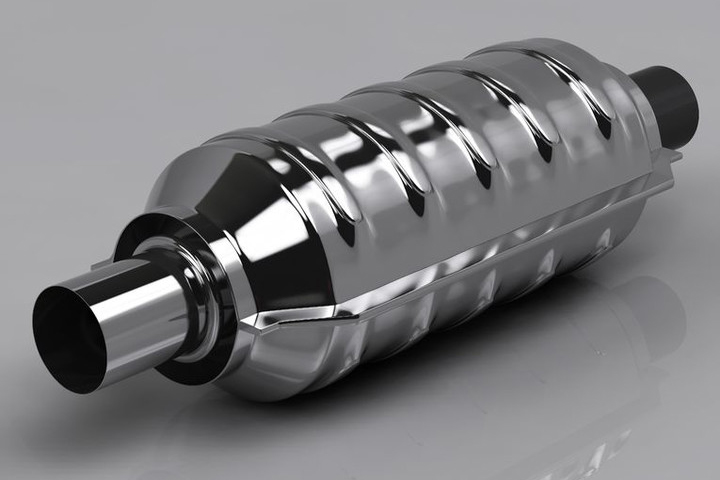
A catalytic converter failure can also cause your car’s check engine light to turn on. The catalytic converter is integrated into a vehicle’s exhaust system. It turns the carbon monoxide generated during the combustion process into carbon dioxide. It’s a fairly simple part, and its failure can often be prevented. That’s good news because a new one costs between $200 and $600 depending on the make and model. Every late-model car that runs on gasoline has a catalytic converter.
Performing regular maintenance (such as oil changes) on time is key to keeping your car’s catalytic converter in working order. If you live in the city and mostly drive short distances, take your car on the highway every now and then to ensure the catalytic converter doesn’t get clogged. And as always, keep your eyes and ears open for unusual sounds or discolored smoke coming from the exhaust.
4. Spark plug/ignition coil issues
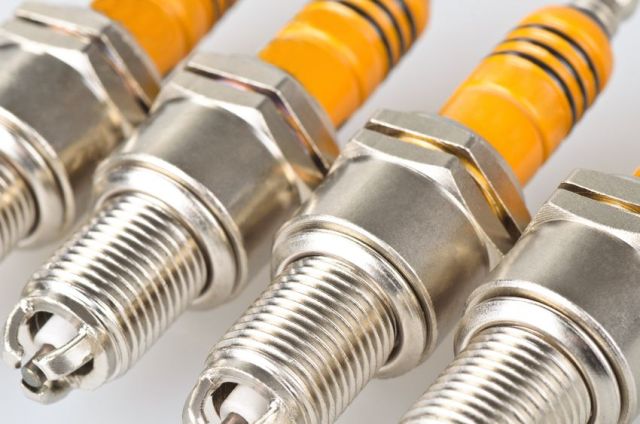
Spark plug/ignition coil issues can trigger your car’s check engine light as well. Put simply, an ignition coil generates the electricity the spark plugs need to ignite the fuel and air mixture in the cylinders. Classic cars have a single coil, but many modern vehicles use one coil per cylinder (it’s often called a coil pack). If your ride has a V8 under the hood, you could have eight separate coils. The monstrous Bugatti Chiron has 16. No matter how many you have though, a malfunctioning coil will almost certainly trigger the check engine light, but remember, if your car burns diesel, you have neither ignition coils nor spark plugs.
Speaking of spark plugs, worn or fouled plugs can cause a variety of issues including an engine misfire and hesitation under heavy acceleration. A worn coil can exhibit the same symptoms, and it can cause the car to shut off unexpectedly. A quality spark plug costs between $10 and $20, while a coil is generally in the $50 range. Changing your own spark plugs is also easier than it sounds.
5. Bad spark plug wires
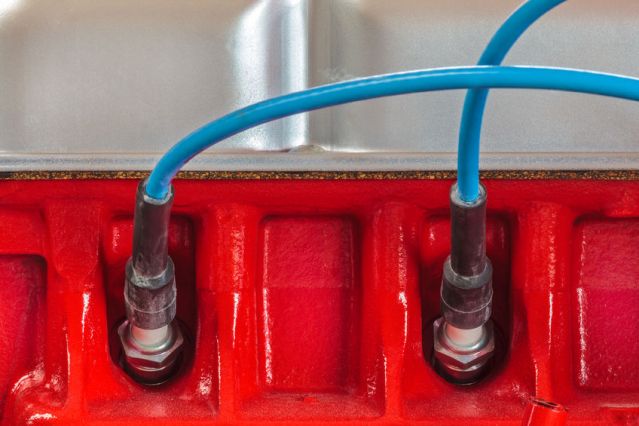
A bad spark plug wire can and will make your check engine light turn on. As its name implies, a spark plug wire transfers electricity from the coil to the spark plug. Without it, the fuel and air mixture in the cylinders wouldn’t ignite. The vast majority of cars use a single wire per cylinder, but there are models — notably, some older Mercedes-Benzes — with two spark plugs per cylinder and, consequently, two wires. Keep in mind that most newer cars do not use spark plug wires, however.
Symptoms of bad spark plug wires include a rough idle, a noticeable drop in engine performance, and lower gas mileage. Expect to spend about $50 on a set of plug wires. Swapping them out is easy — it takes a few minutes and requires no special tools or knowledge.
6. Mass airflow sensor failure
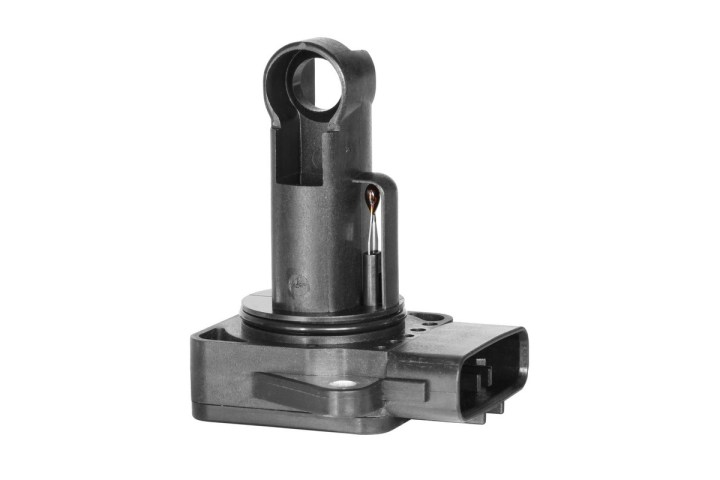
The mass airflow (MAF) sensor can trigger your car’s check engine light. The MAF monitors how much air enters the engine. It’s a part of the engine-management system, so your car wouldn’t be able to adjust to changes in altitude without it. Symptoms of an MAF failure include a rough idle, trouble starting, and a sudden change in the position of the throttle pedal. Reduced gas mileage and stalling can also indicate a MAF problem.
A MAF for a late-model car typically costs between $120 and $150.
7. Issues with an aftermarket alarm
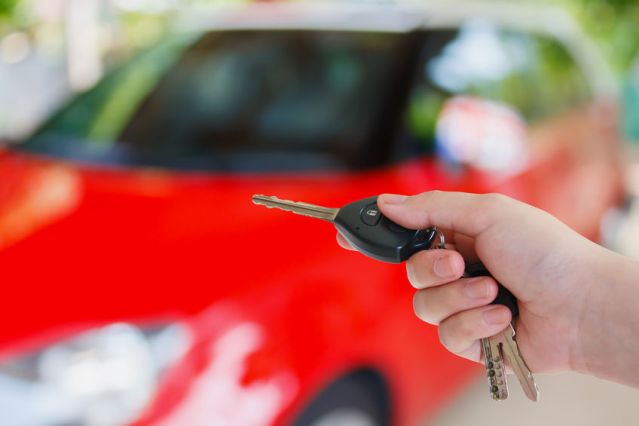
An aftermarket alarm system can wreak havoc on your car—and consequently make your check engine light turn on—if it’s not installed properly. It can drain the battery, trigger the check engine light, or even prevent the vehicle from starting. Then, when you least expect it, it’ll go off in the middle of the night because a leaf from an oak tree fell on the hood.
If the above issues sound familiar, you’ll need to have the alarm fixed, reinstalled, or replaced entirely by a competent mechanic. Getting it done right in the first place might cost a little bit more, but the peace of mind that comes with having a fully functional alarm is priceless.
8. Vacuum leak
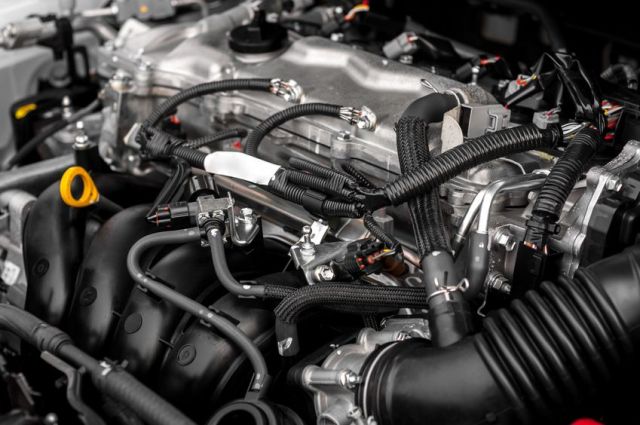
A misfiring vacuum system can trigger your car’s check engine light. Every car has a vacuum system that performs a wide variety of functions. The brake booster is vacuum-operated, and the vacuum system also helps lower emissions by routing the fumes as gasoline evaporates through the engine. If your car’s idle begins to surge or settles at an unusually high rpm, a vacuum leak could be the culprit.
Vacuum hoses can dry out and crack as they age, especially if they’re exposed to intense heat or extreme cold. This is the most common cause of vacuum leaks. Other common issues include cracked fittings and loose connections. Vacuum lines cost just a few bucks each, but tracing the source of the leak can be time-consuming — and expensive if you’re not performing the work yourself.
9. Exhaust gas recirculation valve failure
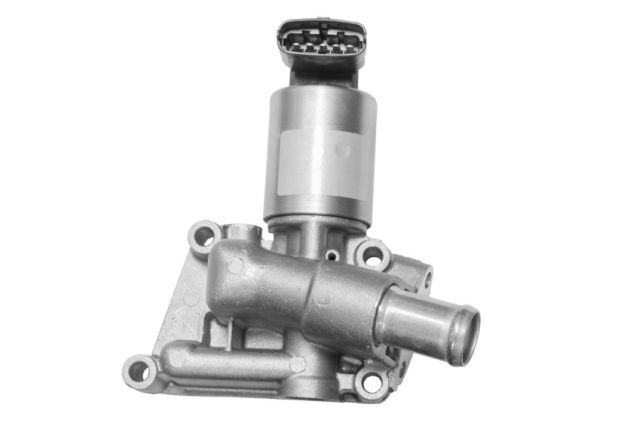
The exhaust gas recirculation (EGR) system lowers the amount of nitrogen oxide that comes out of the car’s engine and helps it run more efficiently. It directs the hot exhaust gases back into the combustion chambers, which makes fuel easier to burn. It also reduces emissions. A clogged or failing EGR can make your car’s check engine light turn on.
If you’re even slightly mechanically inclined, you can remove the valve, clean it, and reinstall it in a relatively short amount of time. If the valve needs to be replaced, expect to pay at least $125 for a brand-new, OEM-quality unit.
10. Dead battery

A dead battery may not only cause the battery light on your car’s front panel to turn on, but your check engine light as well.
The car battery is as simple as it is important; without it, your car won’t start. Today’s batteries last much longer than before and they’re maintenance-free. The price of a new one depends on the type of car you drive, but plan on spending at least $100 for a quality battery.
Changing or charging a battery on your own is a relatively easy task, but keep in mind that in some late-model cars, it’s buried under countless plastic covers, and it might be a little difficult to access. Also, note that disconnecting the battery will often reset your stereo system. If you don’t have the code, ask your local dealer for it before you unbolt the positive and negative terminals. Otherwise, you’ll be driving in silence.
My check engine light is on. Now what?
Modern cars are brimming with high-tech bells and whistles, but you inexplicably still need a separate, aftermarket device to decipher why the check engine light is on. Most motorists simply take their car to the dealership. That’s the easy way out, but it’s also the most expensive route to take. If you want to skip a trip to the repair shop, invest in a OBD II scanner (or a more advanced adapter). You can pick one up for less than $40, which isn’t bad considering many shops charge between $50 and $100 to pull codes from the ECU.
Ready? Start by finding your car’s OBD II port. It’s usually in the driver’s footwell, not far from the hood release, but sometimes it’s hidden behind the center console or in a compartment built into the floor. Plug in the scanner and the error codes stored in the car’s ECU will appear on the screen. Sometimes the codes are clearly explained; other times, you’ll need to do a bit of searching to figure out what something like P1301 means. Repair manuals are useful for deciphering codes, but Google usually has the answer.
Error codes are a useful diagnostic tool that can help you figure out where to start when your car needs a repair; just be careful to understand their limitations. Error codes don’t always tell the full story.
Once, when working on a relative’s car that had lost all power, the ECU codes indicated a problem with the turbo. But the issue wasn’t with the part itself — it was a cracked vacuum hose. Long story short: Having a list of codes at your disposal doesn’t always mean a straightforward solution. You may need to spend a few minutes (or, at worst, a couple of hours) poking around the engine bay to find the issue.
There are professional-grade code scanners that are more precise but also much more expensive. The scanner can only give you a code; you also need in-depth knowledge of what each code means or a useful way to find out. Alternatively, some auto parts stores will run a diagnostic test for free. However, getting a scanner will save you time and money while making you more car-savvy. Make sure the unit you pick is compatible with your car before buying it. Some cheaper scanners won’t work with every make and model, so it pays to do your research.
Will the check engine light tell me when I should fix my car?
The check engine light provides an idea — sometimes precise, sometimes vague — of what’s wrong with a car. However, it does not replace a skilled mechanic or routine maintenance.
In other words, don’t wait until the check engine light comes on to get your car maintenance done. The ECU will not warn you that the water pump is about to fail, that one of the ball joints is worn, or that the A/C will stop blowing cold air in mid-August. Many people think that the check engine light serves the same purpose as a check-up reminder when it really alerts you that you’re probably due for a repair. By that point, the damage has already happened in many cases.
You can think of car maintenance as a two-step process. The first and most critical is routine, preventative maintenance. You should do these tune-ups on a schedule and not in response to any issues. The second is timely diagnostic maintenance which is responsive to changes like new sounds, smells, or feelings as you drive.
You also want to be familiar with your car’s basic needs, like how often to change the oil and coolant or replace brake pads. A little research into your specific vehicle and basic mechanics can save you time and money in the long run. If you’re consistent with a regular maintenance routine, you may never see that little orange engine light pop on at all.




